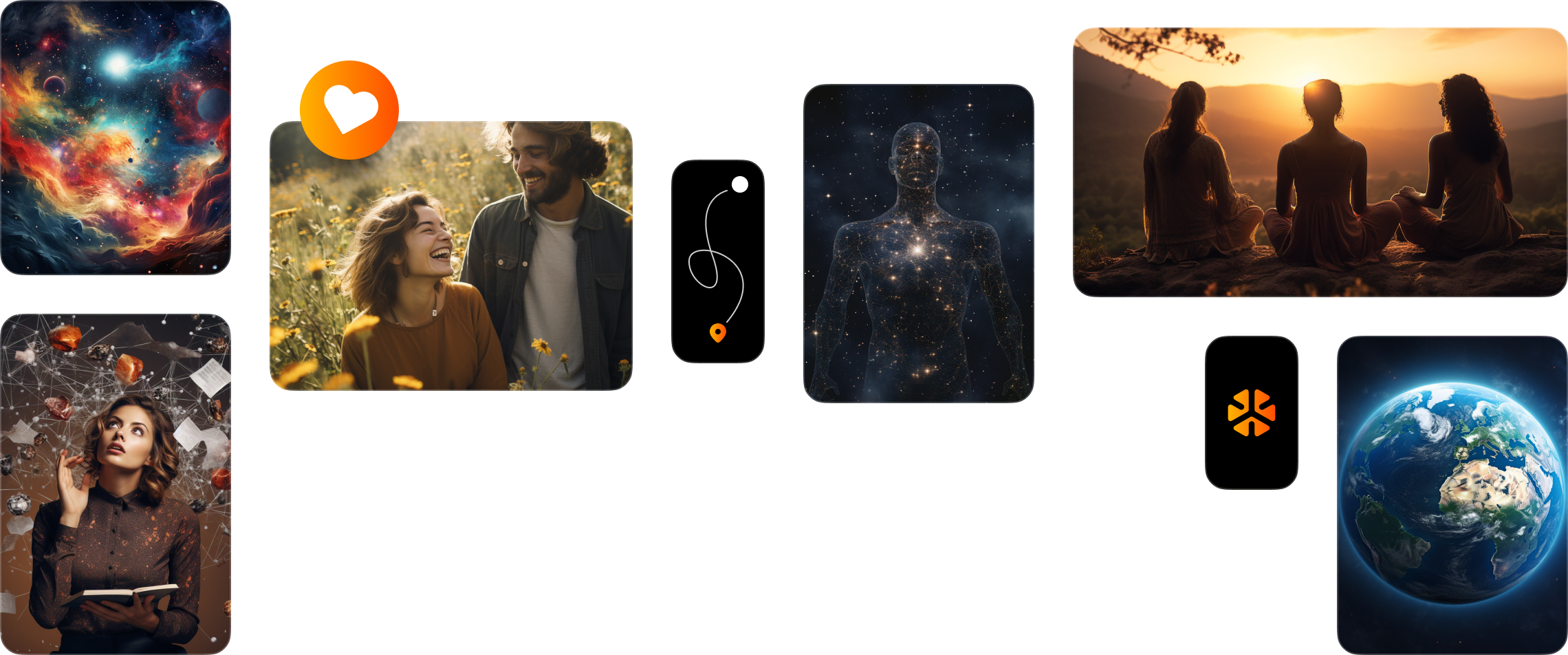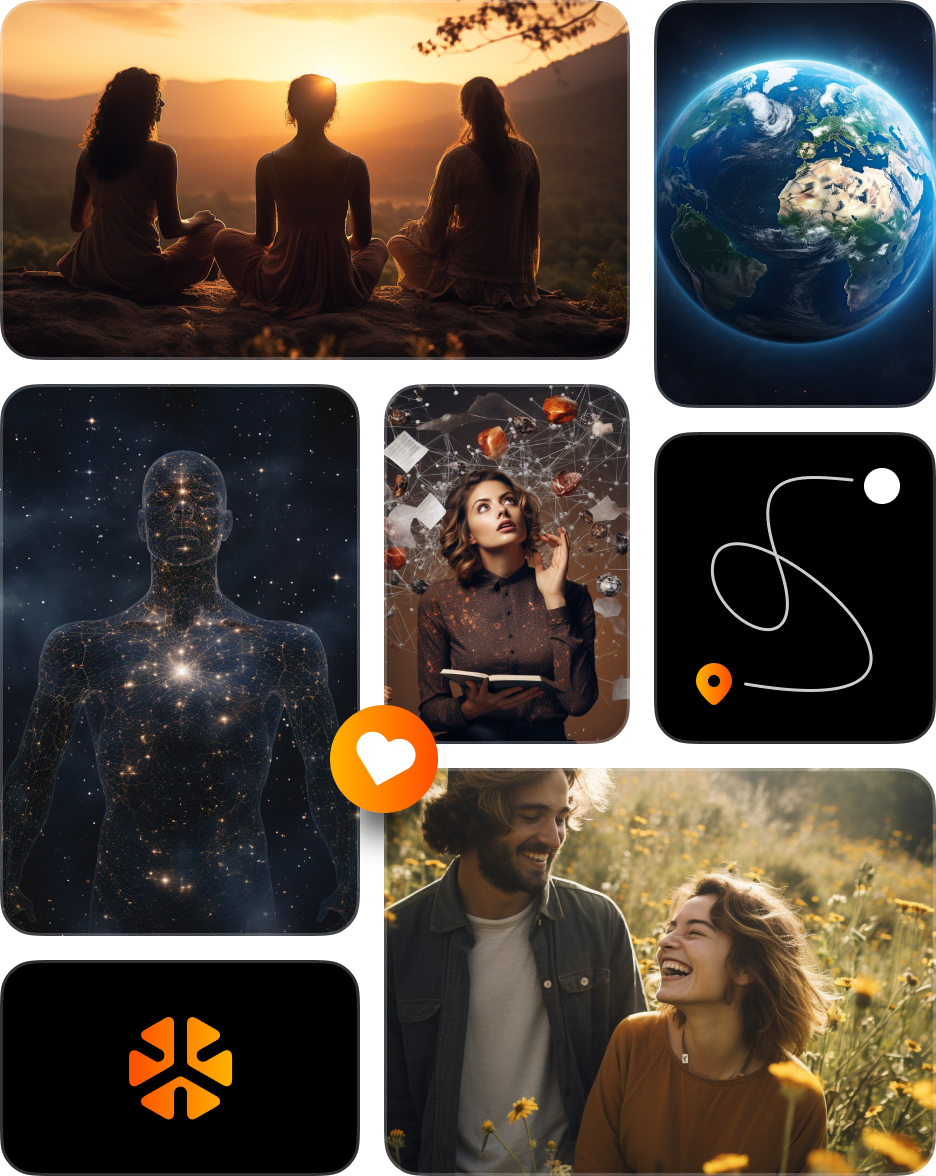What is Human Design?
Human Design is a holistic self-discovery tool that integrates principles from various disciplines, including astrology, the I Ching, Kabbalah, the Hindu-Brahmin chakra system, and quantum physics. Introduced by Ra Uru Hu in 1987, it provides a unique, detailed blueprint of an individual’s energetic design, helping people understand their own nature and navigate life more effectively.
At its core, Human Design is about decision-making. It offers profound insights into how we interact with the world, make decisions, and use energy. The system offers a ‘user manual’ for life, enabling individuals to make decisions that align with who they truly are, rather than being influenced by societal pressures or conditioning.
The Human Design Chart (BodyGraph)
The Human Design chart, often referred to as the BodyGraph, is an individual’s unique blueprint. It maps out various centers, channels, and gates, each of which has a specific meaning. The placement of these elements and whether they are defined (colored in) or undefined (white) gives detailed insights into an individual’s characteristics, strengths, challenges, and purpose.
Centers: There are nine centers in the BodyGraph, similar to the chakras, representing different aspects of life and energy.
Channels: These are the lines connecting the centers, indicating the flow of energy.
Gates: These are points along the channels representing specific energies.
Understanding Your Human Design Type
One of the fundamental aspects of Human Design is your Type. There are four Types: Generators (including Manifesting Generators), Projectors, Manifestors, and Reflectors. Knowing your Type can provide insights into how you interact with the world and make decisions that are correct for you.
Generators (including Manifesting Generators): The builders of the world, making up about 70% of the population. Their strategy is to wait to respond, utilizing their consistent and sustainable Sacral energy to create and build. The not-self theme for Generators is frustration, which arises when they are not using their energy in satisfying ways.
Projectors: The guides of the world, making up about 20% of the population. Their strategy is to wait for an invitation, specifically for big aspects of life such as career and relationships. They are naturally attuned to understanding others and can efficiently guide energy. Their not-self theme is bitterness, which arises when they are not recognized or valued for their talents and insights.
Manifestors: The initiators of the world, making up about 9% of the population. They are the only type that is designed to initiate actions. Their strategy is to inform others about their plans before taking action to avoid resistance. Their not-self theme is anger, which arises when they are not in control or face resistance to their initiatives.
Reflectors: The evaluators of the world, making up about 1% of the population. Their strategy is to wait for a full lunar cycle before making significant decisions, giving them time to sample and reflect on the energies around them. Their not-self theme is disappointment, which arises when they are in unhealthy environments or when they make hasty decisions.
The Centers in Human Design
There are nine energy centers in your BodyGraph, each corresponding to specific aspects of your life and indicating particular strengths and potential challenges.
Head Center: The pressure to think, question, doubt, and process information. It is the center of inspiration.
Ajna Center: The conceptualizing mind, where fixed beliefs and flexible concepts reside. It’s about how we think and process information.
Throat Center: The center for communication and manifestation. It’s where we express our thoughts and ideas.
G Center: The center of identity, direction, and love. It’s about our sense of self, our direction in life, and how we love.
Heart/Will Center: The center for ego, willpower, and value. It’s about our will to do things, our sense of worth, and how we prove ourselves.
Solar Plexus Center: The emotional center, associated with feelings, emotions, and desires. It’s about our emotional state and emotional intelligence.
Sacral Center: The center of life-force energy, sexuality, and work power. It’s about our ability to do work, our vitality, and our sexuality.
Spleen Center: The center for health, intuition, and survival instinct. It’s about our sense of timing, intuition, health, and well-being.
Root Center: The adrenal or stress center. It’s about the pressure to act and the drive to survive.
Your Authority in Human Design
Authority in Human Design refers to your inner decision-making process. It is how you are designed to make decisions that are correct for you, without the influence of the mind’s conditioning.
There are seven types of authorities:
Sacral Authority: A reliable gut response.
Emotional Authority: Requires riding out the emotional wave before reaching clarity.
Splenic Authority: Uses intuitive hits for immediate decision-making.
Ego-Manifested Authority: Decision-making through the will and ego.
Self-Projected Authority: Clarity through verbalizing their process.
Lunar Cycle Authority: For Reflectors, needing a full lunar cycle to make decisions.
No Inner Authority: Relying on environmental influences and timing.
Understanding your authority can help you make decisions that align with your true self, leading to a life of less resistance and more fulfillment.
Profiles in Human Design
Your Profile adds another layer of understanding to your Type and Authority. It’s composed of two numbers, like 1/3, 5/1, or 6/2, representing a combination of twelve possible roles that we play in life, known as Lines.
Each Profile has a specific way of seeing and interacting with the world. For example, a 1/3 profile is called the Investigator/Martyr, indicating a person who needs to investigate and deeply understand things (Line 1) and learns by trial and error (Line 3).
Understanding your Profile can provide insights into your purpose in life, your ideal learning style, and how you best interact with others. It can shed light on your strengths and potential challenges, helping you to live in alignment with your true nature.
Conclusion
Human Design is a powerful tool for self-understanding. It provides in-depth insights into our energy dynamics, decision-making strategies, and potential for growth. The system invites us to experiment with its knowledge, observing our lives through this new lens, and discovering what feels correct and authentic for us. It’s not about subscribing to a set of beliefs, but about experiential validation, personal revelation, and ultimately, living a life that is in alignment with our true nature.




















